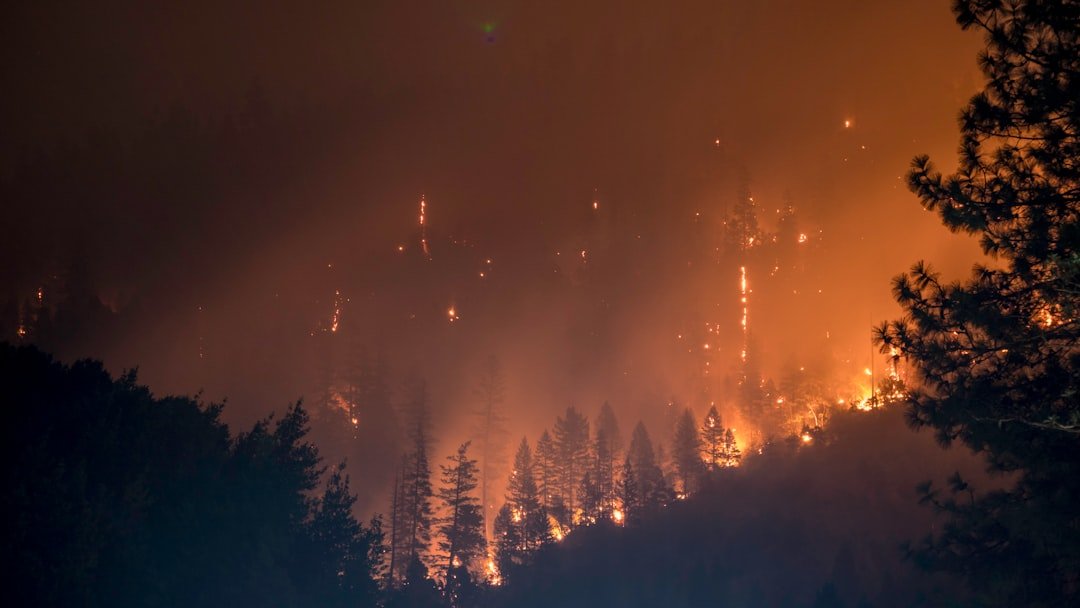The Beauty of Forests: An Examination of the Natural World Forests are frequently referred to as the earth’s lungs and are an essential part of the ecosystem, offering humans and the natural world numerous advantages. With their tall trees, vivid foliage, and variety of wildlife, forests are incredibly beautiful. Numerous plant and animal species combine to form a complex web of life that coexists peacefully in each forest, which is a unique tapestry. Forests provide a haven for innumerable organisms and a haven for people seeking peace in nature, whether they are found in the tranquil coniferous woods of Scandinavia or the dense rainforests of the Amazon.
Key Takeaways
- Forests are a beautiful and vital part of the natural world, providing habitat for countless species and offering a range of ecological benefits.
- Deforestation has a significant impact on wildlife, leading to the endangerment and extinction of many species, disrupting ecosystems and food chains.
- Trees play a crucial role in mitigating climate change by absorbing carbon dioxide and releasing oxygen, making forests essential for the health of the planet.
- Deforestation has severe effects on indigenous communities, leading to displacement, loss of traditional livelihoods, and cultural disruption.
- Visual evidence of deforestation through before and after images highlights the dramatic and devastating impact of human activity on forested areas.
Beyond their natural beauty, forests have aesthetic value. The symphony produced by rustling leaves, chirping birds, and flowing streams soothes the mind and uplifts the soul. Because of the oxygen that trees and other plants produce, the air is frequently fresher in these green spaces. Also, forests are essential for preserving water cycles, controlling the climate, and producing resources like food, medicine, and lumber.
Their beauty is more than just surface-level; it is linked to the planet’s health and the welfare of its people. The Effects of Deforestation on Wildlife: A More Detailed Look at Endangered Species Deforestation puts many species in danger by causing habitat loss and fragmentation. Many animals are left homeless when forests are cut down for logging, urbanization, or agriculture.
Some species may experience sharp population declines as a result of this habitat loss, bringing them dangerously close to extinction. For example, the orangutan, which is indigenous to the Borneo and Sumatra rainforests, has become less common as a result of palm oil plantations displacing their natural habitat. Given the predicament of these endangered species, conservation efforts are desperately needed. Individual species are not the only effects of deforestation; entire ecosystems are disturbed.
| Country | Deforestation Rate (per year) | Forest Area Lost (hectares per year) |
|---|---|---|
| Brazil | 0.25% | 1,350,000 |
| Indonesia | 0.5% | 840,000 |
| Russia | 0.1% | 1,160,000 |
| China | 0.4% | 720,000 |
The delicate balance that supports different forms of life is thrown into chaos when trees are cut down. Insects lose their habitats, mammals lose food sources, and birds lose places to nest. A decrease in biodiversity, which is crucial for ecosystem resilience, may result from this domino effect. The interdependence of life within forest ecosystems is illustrated by the fact that the extinction of one species can have profound consequences for other species.
Preserving the complex web of life that sustains all living things is more important than merely saving individual species. The Function of Trees in Climate Change: Appreciating the Value of Forests Because they act as carbon sinks, trees are essential to reducing the effects of climate change. They store carbon dioxide from the atmosphere in their biomass through the process of photosynthesis.
The concentrations of greenhouse gases, the main cause of global warming, are lowered by this natural process. Deforestation, on the other hand, increases climate change and raises temperatures by releasing stored carbon back into the atmosphere. In addition to lowering this essential carbon storage capacity, forest loss also lowers biodiversity and modifies regional climates. Forests also have an impact on precipitation cycles & weather patterns.
Transpiration, the process by which water evaporation occurs from plant leaves, aids in temperature regulation and humidity maintenance. These processes are disturbed when forests are destroyed, which can change weather patterns and cause floods or droughts. Given the role that trees play in regulating the climate, sustainable forest management techniques that give conservation and restoration initiatives top priority are essential. Human Impact: How Deforestation Affects Indigenous Communities Native communities all over the world have historically depended on forests for their identity, culture, and means of subsistence. Their way of life is in danger, along with the ecosystems they live in, due to deforestation.
Native Americans frequently lose their ancestral lands when forests are cut down for development or agriculture. When customs connected to the land become harder to uphold, this loss may result in cultural deterioration. As these communities struggle to preserve their legacy & guarantee their survival, the fight for land rights becomes crucial. Also, deforestation can make indigenous populations’ economic struggles and social injustices worse.
Many people depend on forest resources for shelter, food, & medicine; their capacity to survive is weakened when these resources are destroyed or reduced. These communities become even more marginalized when industrial activities encroach and frequently result in disputes over resource management & land use. Addressing deforestation & encouraging sustainable practices that respect indigenous peoples’ ties to the land require acknowledging their rights and knowledge. Before and After Photos of Deforested Areas Visual evidence is a potent reminder of how deforestation affects landscapes all over the world.
Images showing before & after clearly show how verdant forests can be turned into agricultural fields or inhospitable areas. A sense of urgency and loss is evoked by these pictures, which emphasize the sharp contrast between vibrant ecosystems and barren landscapes devoid of their inherent beauty. Such visual documentation can play a crucial role in bringing attention to the negative effects of deforestation and inspiring action for conservation initiatives.
These photographs can offer insights into the communities impacted by deforestation in addition to illustrating the tangible changes in landscapes. They capture both the human cost of these changes as well as the environmental deterioration. Advocacy groups can emotionally engage audiences and motivate them to take action against deforestation by showcasing captivating visual narratives. The power of imagery is found in its capacity to convey the importance of protecting our planet’s forests while overcoming linguistic barriers. Environmental Effects: Soil Erosion, Flooding, & Biodiversity Loss Deforestation has a number of negative effects on the environment that go well beyond the simple loss of trees.
These effects include a number of problems that jeopardize ecological stability. Soil erosion is one important effect. Because of their root systems, trees are essential for keeping soil in place; when they are taken down, soil is more susceptible to erosion from wind & water.
This erosion may result in less fertile soil, which would hinder the growth of new vegetation and interfere with farming operations. Deforestation can also make flooding more severe. As organic sponges, forests control the flow of water within ecosystems and absorb rainfall.
Because there is less vegetation to absorb excess water when trees are cut down, runoff increases and the likelihood of flooding in the surrounding areas increases. Local communities are impacted, and by changing sedimentation patterns and water quality, aquatic ecosystems are also disturbed. Another serious effect is the loss of biodiversity; when habitats are destroyed, many species are at risk of going extinct or seeing population declines, which further upsets ecosystems.
The Worldwide Impact of Deforestation: Analyzing the Global Consequences Deforestation has global ramifications that impact biodiversity, climate patterns, and human livelihoods everywhere. By absorbing enormous amounts of carbon dioxide, the Amazon rainforest, sometimes known as the “lungs of the Earth,” plays a critical role in controlling the global climate. When this crucial area experiences deforestation, it greatly exacerbates climate change & global warming.
Because ecosystems are interconnected, changes in one place can have repercussions on entire continents. Also, deforestation plays a role in the worldwide decline of biodiversity. The rate of extinction of species increases sharply as habitats are destroyed. Whole ecosystems that depend on biodiversity for stability and resilience are also at risk from this loss, in addition to individual species. Global agricultural productivity may be impacted by imbalances and food chain disruptions caused by biodiversity loss.
Given the extent of deforestation worldwide, it is imperative that we all work together to address this urgent problem. Solutions and Hope: Attempts to Stop Deforestation and Restore Forests Despite the difficulties caused by deforestation, there is hope thanks to a number of programs designed to stop this catastrophe and restore forests all over the world. As more people realize how important it is to restore degraded lands, reforestation efforts have accelerated. In addition to aiding in carbon sequestration, planting native tree species promotes biodiversity in the area by giving wildlife habitat. Numerous organizations are collaborating with indigenous communities to adopt conservation-focused, traditional knowledge-respecting, sustainable land management techniques.
At the national & international levels, policies have also been introduced to try to reduce deforestation. Programs like REDD+ (Reducing Emissions from Deforestation and Forest Degradation) encourage sustainable development methods while providing incentives for nations to preserve their forests. Public awareness initiatives are essential for informing people about their effects on forests and promoting wise consumption decisions. By encouraging a sense of responsibility for the environment, society can work together to protect these important ecosystems for coming generations.
To sum up, forests are priceless resources that benefit both nature and people in many ways. Nonetheless, wildlife, indigenous communities, climate stability, and biodiversity worldwide are all seriously threatened by deforestation. People can help ensure a more sustainable future where forests continue to flourish as vital elements of the health of our planet by being aware of these problems and supporting conservation and restoration initiatives.



